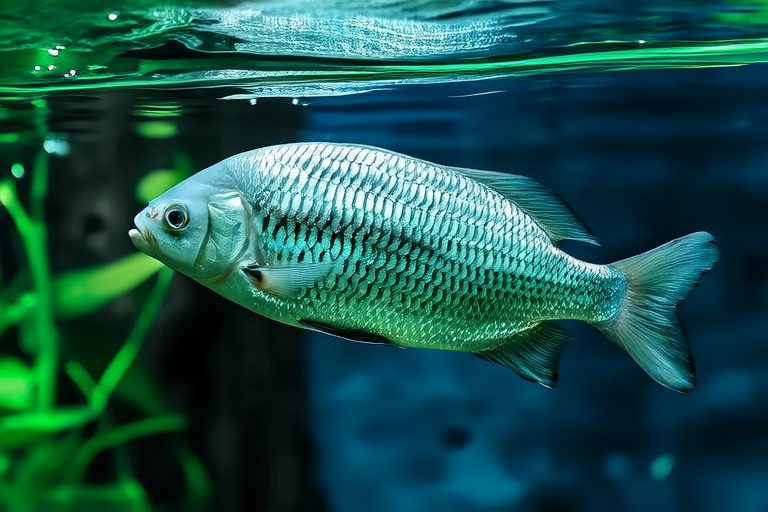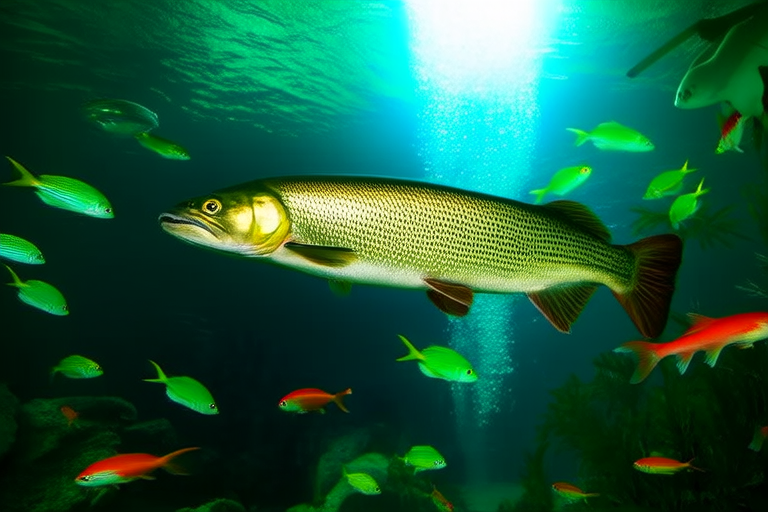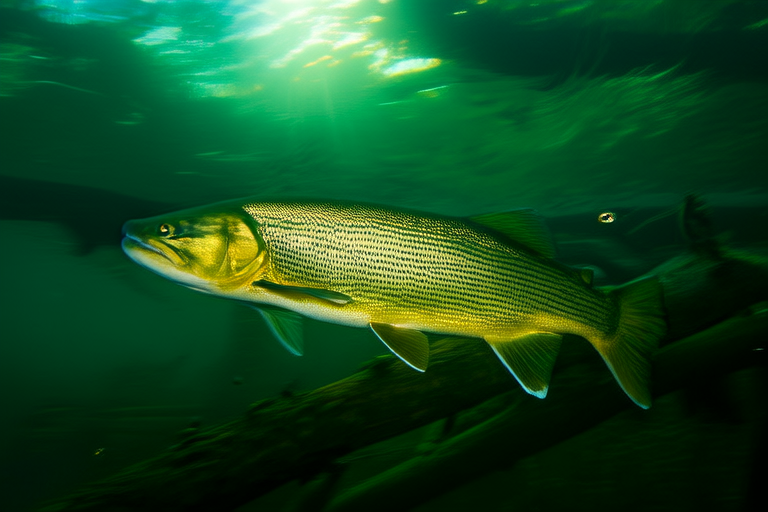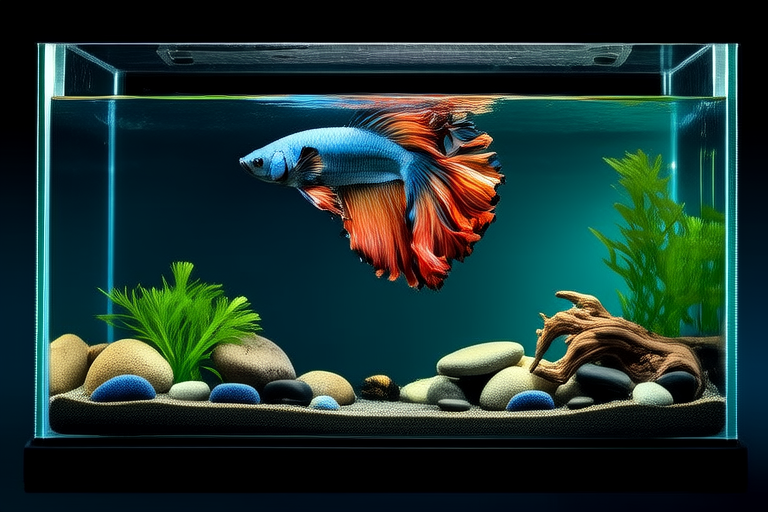
Aquarium Marvels: Caring for the Stunning Silver Dragon, Arowana
The silver arowana (Osteoglossum bicirrhosum) is a true aquatic marvel, captivating aquarists with its majestic appearance and fascinating behaviors. Often referred to as the ‘silver dragon’ due to its elongated body and shimmering scales, this species is a testament to nature’s artistry. In this comprehensive guide, we delve into the intricacies of caring for the silver arowana, providing essential information on tank setup, water conditions, diet, and behavioral insights. By understanding these aspects, you can ensure your silver arowana thrives in your aquarium.
Understanding the Silver Arowana
The silver arowana is native to the Amazon River basin, where it navigates through dense vegetation and murky waters. This fish is known for its sleek, torpedo-shaped body and its large, iridescent scales that glisten like silver under light. Its most distinctive feature is the pair of barbels near its mouth, which it uses to detect prey in the water. The arowana is a highly intelligent and active fish, making it a standout addition to any aquarium.
Tank Setup
Setting up the right environment is crucial for the well-being of your silver arowana. These fish require a spacious tank, ideally at least 250 gallons for a single adult. Given their size and activity level, a long tank is preferable to a tall one. The tank should be decorated with plenty of hiding spots, such as driftwood and rocks, to mimic their natural habitat. Live plants can also be included, but they need to be robust enough to withstand the arowana’s powerful movements.
Substrate-wise, a soft sand or fine gravel is recommended to prevent injuries from sharp-edged substrates. Additionally, ensure the tank has ample space for swimming, as arowanas are known for their graceful leaps out of the water, a behavior that showcases their agility and strength.
Water Conditions
Maintaining optimal water quality is vital for the health of your silver arowana. The ideal temperature range for the water is between 78°F and 84°F (25°C to 29°C). The pH level should be slightly acidic to neutral, between 6.0 and 7.5. Regular water changes, typically 10-20% weekly, are necessary to keep the water clean and free from harmful toxins. A robust filtration system is essential, as arowanas produce a significant amount of waste. Additionally, consider installing a lid on the tank to prevent them from jumping out during feeding or play.
Diet and Feeding
The silver arowana is a carnivorous fish, primarily feeding on insects, small fish, and crustaceans in the wild. In captivity, their diet should be varied to ensure they receive all necessary nutrients. High-quality pellets designed for large carnivorous fish can form the base of their diet. However, it is important to supplement their diet with live foods such as feeder fish, earthworms, and crickets. Occasionally, frozen foods like bloodworms and brine shrimp can also be offered. Feed your arowana once or twice daily, ensuring that the food is appropriate for their size and nutritional needs.
It’s worth noting that overfeeding can lead to obesity and related health issues. Always monitor their eating habits and adjust the portion sizes accordingly.
Behavioral Insights
Silver arowanas are known for their intelligence and interactive nature. They are curious and often approach the glass when they sense movement, sometimes even recognizing their caretakers. Despite their peaceful demeanor, they can become territorial, especially if their territory is invaded by another fish. It’s advisable to house them alone or with other large, similarly-sized species that won’t be seen as prey.
One of the most remarkable behaviors of the silver arowana is their ability to leap out of the water to catch flying insects. This behavior is a survival mechanism in the wild but can pose risks in captivity. Ensuring the tank is secure and the water level is appropriate can help minimize such incidents.
Maintaining Health and Enhancing Lifespan
To keep your silver arowana healthy and vibrant, regular monitoring and maintenance are key. Conduct routine checks for signs of illness, such as lethargy, loss of appetite, or unusual physical changes. If any symptoms are noticed, consult a veterinarian specializing in exotic fish. Maintaining a stable and clean environment, along with a balanced diet, will significantly enhance their lifespan, which can range from 10 to 20 years.
Regular water testing and maintenance of water parameters are critical. Test kits should be used to check for ammonia, nitrite, and nitrate levels. Any deviations should be addressed promptly to avoid stress and potential health issues.
Unique Characteristics
The silver arowana is not just a beautiful fish; it is a marvel of evolution. Their sleek bodies are perfectly adapted for speed and agility in the water. The barbels near their mouths are highly sensitive, allowing them to detect vibrations and locate prey even in low visibility conditions. Their eyes are positioned high on their heads, giving them a wide field of vision and the ability to see above the water surface, a trait that aids in their hunting techniques.
Swimming behavior is another aspect that sets the silver arowana apart. They are strong swimmers and can move swiftly through the water, darting after prey with impressive speed. Their leaping ability is particularly striking, showcasing their strength and adaptability. Watching them interact with their environment can be a mesmerizing experience for any aquarist.
Conclusion
Caring for the silver arowana requires dedication and attention to detail, but the rewards are immeasurable. With the right setup, proper care, and a commitment to their well-being, your silver arowana can thrive and bring joy to your aquarium. Whether you’re a novice or an experienced aquarist, the silver arowana’s unique characteristics and behaviors make it a truly special addition to any collection. Embrace the challenge and enjoy the beauty and wonder of this aquatic marvel.






